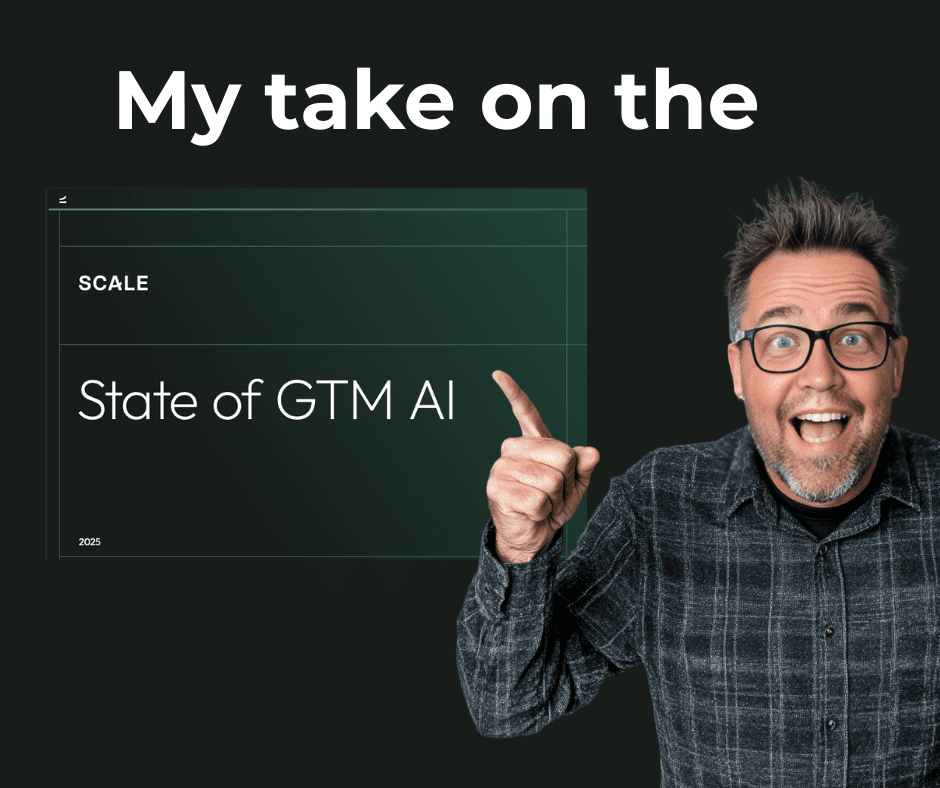Comprehensive Analysis & Strategic Insights
The State of GTM AI 2025 report reveals that AI adoption in go-to-market (GTM) functions has reached historic levels—two-thirds of B2B teams now use AI regularly, and 85% have already seen productivity gains.
Yet, many organizations are still in Phase 1 of AI adoption, focused on doing more with less through productivity improvements. The next frontier, Phase 2, emphasizes doing better—using AI to directly impact performance metrics such as pipeline growth, conversion rates, and win rates.
The report outlines a clear path for GTM leaders to evolve from tactical AI use to strategic transformation—anchored in RevOps leadership, specialized GTM engineering talent, and balanced build-vs-buy adoption models.
Key Takeaway:
AI adoption in B2B go-to-market (GTM) teams is now mainstream, driving significant productivity gains. The next frontier is leveraging AI to directly impact core business metrics—requiring a strategic shift from basic automation (Phase 1) to advanced, outcome-driven applications (Phase 2). Marketing teams, in particular, must evolve their AI strategies to maximize business impact.
Executive Summary
The “State of GTM AI 2025” report reveals a rapid, widespread adoption of AI across GTM teams, with 66% of teams using AI regularly and 85% reporting productivity boosts. The report identifies two distinct phases of AI adoption:
- Phase 1: Focused on productivity and efficiency through automation.
- Phase 2: Aims to improve the quality of work and directly move key business metrics like pipeline, win rates, and revenue.
While most teams are still in Phase 1, early adopters of Phase 2 are beginning to see measurable improvements in business outcomes. The report provides actionable recommendations, especially for marketing teams, to transition effectively and realize the full value of AI.
1. Key Insights & Main Themes
| Theme | Details |
|---|---|
| AI Adoption is Ubiquitous | 66% of GTM teams use AI regularly; fastest tech adoption in sector history |
| Productivity Gains are Widespread | 85% of adopters report a boost; no teams wish to revert to pre-AI workflows |
| Two Phases of Adoption | Phase 1: Productivity; Phase 2: Quality & business impact |
| ROI Measurement is Challenging | Productivity is up, but direct impact on pipeline/win rates is just emerging |
| RevOps as AI Leaders | RevOps teams are best positioned to lead AI initiatives |
| Strategic Transition Needed | Moving from automation to outcome-driven AI is essential for future growth |
“In three years, GTM AI went from zero to ubiquitous. We’ve never seen a technology transform GTM work this quickly.”
— Scott Brinker, Chiefmartec
2. Phase 1 vs Phase 2: Comparative Analysis
| Aspect | Phase 1: Productivity Focus | Phase 2: Quality & Impact Focus |
|---|---|---|
| Objective | Do more with less | Move key business metrics |
| Adoption Status | Widespread (66%+ teams) | Early adopters only |
| Use Cases | Drafting messaging, research, admin | Data analysis, skill development, optimization |
| Impact | Productivity, cost savings | Pipeline, win rates, NRR |
| Measurement | Output per person | Department-wide metrics |
Phase 1:
- Use Cases: Automating routine tasks, generating content, speeding up research
- Impact: Faster task completion, reduced manual effort, lower cost per output
- Limitation: Little movement in core business metrics (pipeline, win rates, NRR)
Phase 2:
- Use Cases: Advanced data analysis, AI-driven coaching, process optimization
- Impact: Direct improvements in pipeline, conversion rates, win rates
- Strategic Value: AI becomes a driver of business outcomes, not just efficiency
Key Finding:
The transition from Phase 1 to Phase 2 is critical for organizations seeking to realize the full business value of AI in GTM operations.
3. Marketing Team Implications & Recommendations
Implications for Marketing Teams
- AI is now essential for content creation, campaign execution, and research.
- Productivity gains are clear, but impact on pipeline and conversion rates is still emerging.
- Measurement and attribution of AI-driven ROI remains a challenge.
Recommendations
| Recommendation | Expected Benefit |
|---|---|
| Move beyond basic automation | Drive measurable business outcomes |
| Adopt advanced AI use cases (analytics, personalization) | Higher engagement, improved conversion rates |
| Collaborate with RevOps and GTM engineers | Better data integration, higher impact on pipeline |
| Define and benchmark current state | Targeted AI deployment, accurate measurement |
| Balance build vs. buy for AI tools | Agility and cost-effectiveness |
“Marketing teams are producing more assets in a single quarter than they used to in an entire year.”
— Sydney Sloan, CMO, G2
Actionable Strategies
- Deploy AI for advanced segmentation and personalized content
- Integrate AI-driven analytics into campaign planning
- Automate A/B testing and experimentation
- Establish clear KPIs and tracking for AI initiatives
Summary Box:
Marketing teams must evolve from using AI for basic automation to leveraging it for advanced, metric-moving applications. Collaboration with RevOps and investment in technical talent are key to success.
4. Productivity Metrics, ROI Data, and Trends
| Metric/Outcome | Value/Trend (2025) |
|---|---|
| AI Adoption Rate | 66% of GTM teams regularly using AI |
| Productivity Boost Among Adopters | ~85% have seen a productivity boost |
| Teams Willing to Revert to Pre-AI | 0% (none) |
| Projected Productivity Increase | 30% over next two years |
| Direct ROI on Downstream Metrics | Not yet widely observed; expected in Phase 2 |
| Teams with GTM Engineers (Impact) | 30% more likely to achieve high impact |
- Productivity gains are real and widespread, but direct ROI on core business metrics is still emerging.
- Expense reduction per unit of output is clear; direct impact on pipeline and revenue is expected as Phase 2 matures.
- Future outlook: A further 30% productivity increase is projected over the next two years.
5. Strategic Recommendations for GTM AI Success
- Assess and benchmark current operations before deploying new AI tools.
- Prioritize transition to Phase 2 use cases for direct business impact.
- Empower RevOps and hire GTM engineers to lead and manage AI initiatives.
- Balance custom development and off-the-shelf solutions for agility and effectiveness.
- Evolve measurement frameworks to capture both productivity and business outcome improvements.
Conclusion
Key Takeaway:
AI is now foundational to GTM strategy. While most teams have realized significant productivity gains, the next phase of AI adoption will be transformative—directly impacting pipeline, win rates, and revenue. Success will depend on leadership, technical talent, and the ability to measure and alignsiness objectives.








